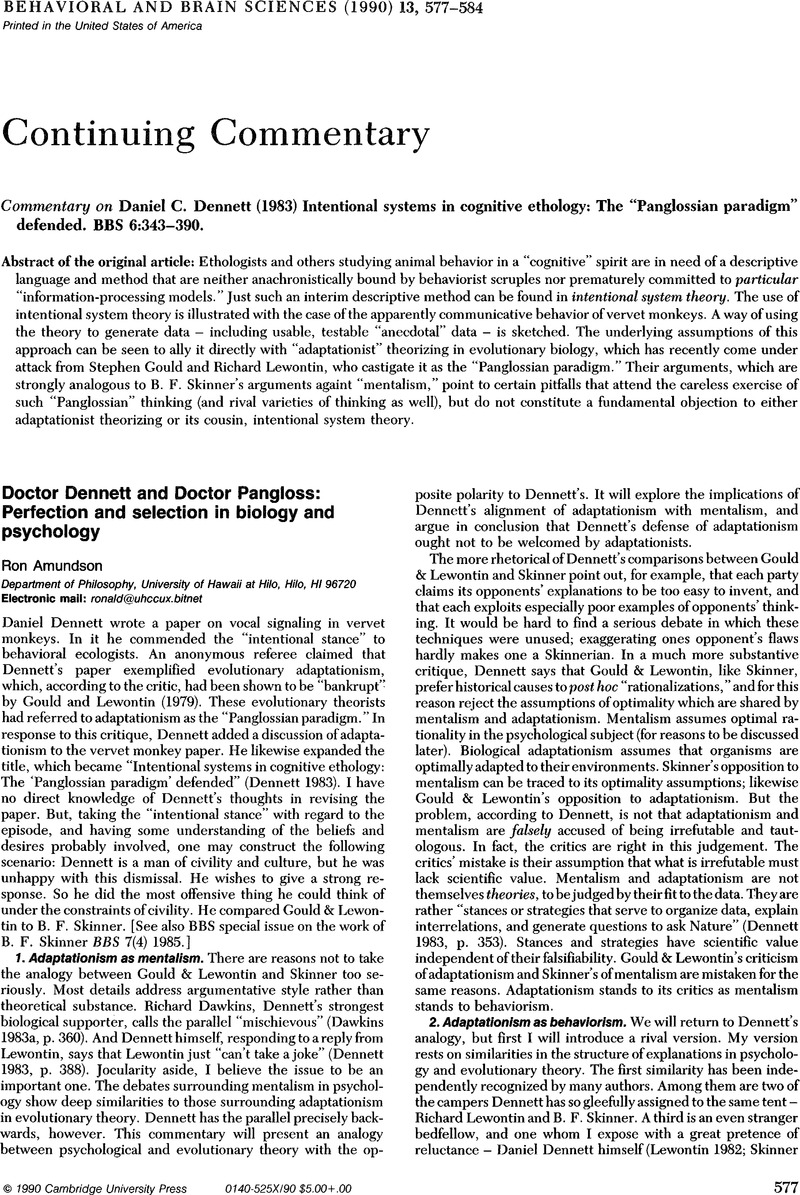Crossref Citations
This article has been cited by the following publications. This list is generated based on data provided by Crossref.
Dennett, Daniel C.
1993.
Evolution, teleology, intentionality.
Behavioral and Brain Sciences,
Vol. 16,
Issue. 2,
p.
389.
Ringen, Jon
1993.
Dennett's intentions and Darwin's legacy.
Behavioral and Brain Sciences,
Vol. 16,
Issue. 2,
p.
386.
Bennett, Jonathan
1993.
Comments on Dennett from a cautious ally.
Behavioral and Brain Sciences,
Vol. 16,
Issue. 2,
p.
381.





